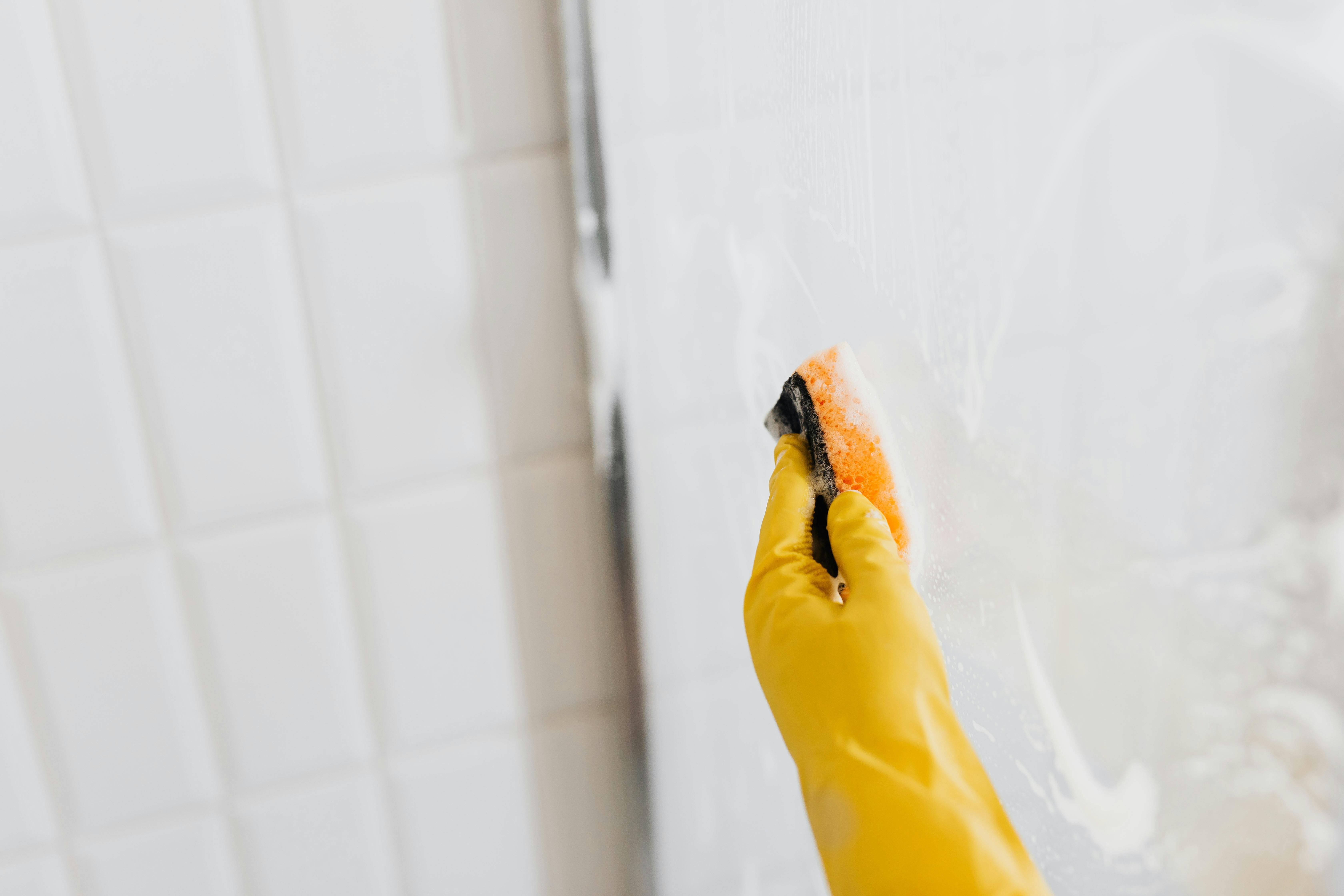If you have a well on your property, it is important to take measures to ensure the water is safe and free of contaminants. One common issue faced by many well owners is the presence of algae in their water. Algae can affect the taste and overall quality of your drinking water, so it is important to remove it as soon as possible. Fortunately, there are several steps you can take to remove algae from your well water. In this article, we will provide an overview of how to effectively remove algae from well water.Algae in well water is a type of aquatic plant that can grow and thrive in water systems, such as a well. It appears as a slimy, greenish-brown film on the surface of the water and can also appear as small stringy particles that may float in the water. Algae can be found naturally in well water, but it can also be caused by over-fertilization or excess nutrients from nearby soil.
What Causes Algae Growth in Well Water?
Algae growth in well water is most commonly caused by an imbalance in the water’s chemical composition. When certain nutrients, such as phosphorous and nitrogen, are present in high concentrations, algae can begin to grow rapidly. Additionally, a well that is not properly maintained or has been contaminated with surface runoff can also lead to an increase in algae growth. Sunlight, especially when combined with warm temperatures, can further encourage the growth of algae.
In order to keep algae from growing in a well, it is important to maintain proper levels of chlorine or other sanitizers. This will help reduce the amount of nutrients available to feed the algae and prevent it from spreading. Additionally, maintaining proper pH levels and keeping the well sealed will help limit the amount of sunlight and surface runoff that can contribute to an increase in algae growth. Regularly testing and monitoring the water for any changes in chemical composition can also help detect and prevent any potential problems before they become too severe.
It is also important to note that while some types of algae are harmless, others may produce toxins or negatively impact water quality. If you notice an increase in algae growth or suspect that your water may have been contaminated, it is important to contact a professional for testing and treatment as soon as possible.
Identifying Algae in Well Water
Knowing how to identify algae in well water is important for maintaining a safe and healthy water supply. Algae can be dangerous as they can produce toxins that can be harmful to humans and animals. It is important to identify any algae present in your well water so that you can take the necessary steps to remove it.
The most common way to identify algae in well water is by testing the water with an algal identification kit. These kits are designed to use a sample of the water from the well and test it for various types of algae. If any are detected, then the kit will give you instructions on how to properly treat the water for removing the algae.
Another way to identify algae in well water is by visual inspection. If you notice any green or blue-green colored growths around your well or on rocks near it, then there may be some kind of algae present in your well water. To confirm this, you may need to take a sample of the growth and have it tested by a laboratory for further analysis.
If you suspect that there may be some kind of algae present in your well water, then it is important to take steps to remove it as soon as possible. Depending on the type of algae present, there are various treatments available such as chlorination and filtration systems that can help eliminate these organisms from your drinking water supply. Make sure that any treatment options you use are approved by local health authorities before implementing them.
It is also important to regularly inspect your well for any signs of contamination from algae or other sources such as bacteria or viruses. If you find anything suspicious, then contact a professional immediately who can diagnose and treat the problem accordingly. Proper maintenance and monitoring of your wells can help ensure that all contaminants are removed before they cause any health risks or damage to your drinking supply.
Testing Requirements for Algae in Well Water
Testing for algae in a well water system is important to ensure the safety of drinking water. Algae can be found in a variety of forms, including planktonic, filamentous and macroscopic. Different types of algae can have different effects on the quality of the water and its taste and odor. Therefore, it is important to perform regular testing to determine the presence and concentration of algae in a well water system.
Various testing methods are available to detect algae in well water systems. Some tests are conducted onsite using handheld devices, while others require samples to be taken from the well and analyzed in a laboratory setting. When conducting onsite testing, it is important to follow the manufacturer’s instructions carefully to ensure accurate results. Samples taken from the well should also be handled with care to prevent contamination from other sources.
The types of tests required for detecting algae in well water can vary depending on the type of algae present and its concentration. Generally, routine biological tests such as total suspended solids (TSS), turbidity, pH, oxidation-reduction potential (ORP), and alkalinity are recommended for detecting planktonic or filamentous algae. For macroscopic forms of algae, physical tests such as colorimetric analysis may be needed to measure concentrations accurately.
It is also important to consider seasonal changes when performing testing for algae in a well water system. Algae populations tend to increase during warmer months due to increased nutrient availability. Therefore, regular monitoring should be conducted during these periods so that any changes in the concentration of algae can be detected quickly and appropriate remedial action taken if necessary.
In conclusion, testing requirements for detecting algae in a well water system vary depending on the type and concentration of algae present. Onsite testing methods may be used for routine sampling while more comprehensive laboratory tests may be required if more detailed information about the presence or concentration of specific types of algae is needed. Regular monitoring should also take place during warmer months when concentrations tend to increase significantly.
Different Methods to Remove Algae from Well Water
Algae is one of the most common contaminants found in well water. It can cause discoloration, bad taste, and unpleasant odors. It can also lead to health issues if consumed. Fortunately, there are several methods that can be used to remove algae from well water.
The first step in removing algae from well water is to identify the type of algae present. Different types of algae will require different treatment methods. For instance, filamentous algae may require chemical treatment while planktonic algae may require mechanical filtration.
Once the type of algae has been identified, the next step is to remove it from the well water. The most common method for removing algae is using a chlorine disinfectant such as sodium hypochlorite or calcium hypochlorite. Chlorine disinfectants work by oxidizing the cell walls of the algae, killing them in the process. However, chlorine disinfectants should only be used as a last resort because they can also kill beneficial bacteria that are needed for maintaining a healthy ecosystem in your well water system.
Another method for removing algae from well water is through mechanical filtration. This involves filtering out suspended particles such as sediment and organic matter that can act as food sources for algae growth. By removing these particles, you can reduce the amount of food sources available to the algae and thus reduce its growth rate or even eliminate it altogether.
Finally, UV light can also be used to kill off any remaining living organisms in your well water system including any remaining traces of algae. UV light works by disrupting the DNA structure of living cells and thus preventing them from reproducing or growing further. UV light is generally considered a safe method for treating drinking water although it does not remove any solids or other particulates that may be present in your well water system.

Physical Removal of Algae from Well Water
Algae is a common problem for many well water users, as it can cause discoloration, taste and odor issues. In order to remove the algae, it is important to physically remove it from the water. The most common method of physical removal is filtration. Filtration systems use a combination of filters and media to trap and remove algae particles from the water.
The type of filter used will depend on the size and type of algae present in the well water. For small algae particles, a sediment filter may be sufficient, while larger particles may require an activated carbon filter or a combination of both. Media filters are designed specifically to remove algae cells from the water, and are most effective when used in combination with other filtration systems.
Another option for physical removal is ultraviolet (UV) disinfection. UV disinfection uses UV light to destroy and eliminate living organisms such as algae in the water supply. This method is highly effective, however it does not always provide complete removal of all types of algae.
Physical removal methods are often used in combination with chemical treatment methods such as chlorine or alum to ensure complete elimination of existing algae growths. Chemical treatments work by disrupting the cell walls of the algae, but can be ineffective if not combined with physical removal methods.
Overall, physical removal methods are an important step in ensuring that well water remains free from harmful contaminants such as algae. By using filtration systems or UV disinfection along with chemical treatments, you can effectively reduce or eliminate existing algal growths in your well water supply.
Chemical Treatment for Removing Algae from Well Water
Algae can be a major problem for homeowners with well water, as it causes the water to become murky, discolored, and unpleasant to use. Fortunately, there are chemical treatments that can be used to remove algae from well water.
The most common chemical treatment is chlorine. Chlorine is an effective disinfectant that kills bacteria and algae in water. It is often added to municipal water supplies to keep them safe for human consumption. Chlorine can also be added to private wells to kill off algal blooms that cause murky or discolored water.
Chlorine can be applied directly to the well or added into the existing pump system. When using chlorine, homeowners should follow all safety warnings on the product labels and wear protective gear such as gloves and a facemask when handling it. In addition, it’s important not to over-treat the water with chlorine because excess amounts can make the water unsafe for drinking or bathing.
Another option is copper sulfate, which is a popular algaecide for treating lakes and ponds but can also be used in well water systems. Copper sulfate works by killing algae on contact and prevents any new growth from occurring. It’s important not to use too much copper sulfate in well water as it can cause skin irritation and other health problems if ingested in large quantities over time.
Finally, granular activated carbon (GAC) filters are another option for removing algae from well water systems. These filters work by trapping organic particles like algae in their porous surface area as they pass through the filter media. GAC filters are usually installed at the end of a home’s plumbing system so that all of the incoming well water passes through them before entering pipes or fixtures inside the house.
Chemical treatments are a great way to remove algae from well water systems and restore clean, clear drinking water for homeowners with wells. Homeowners should always follow product instructions carefully when using chemicals with their wells, however, as improper use could potentially lead to health problems or damage their plumbing system over time.
Disinfecting the Well System for Removing Algae from Well Water
Removing algae from well water is an important step in ensuring safe and clean drinking water. Algae can cause a range of health problems, including gastrointestinal issues, headaches, and allergies. Disinfecting the well system is a key part of removing algae from well water. There are several methods for disinfecting a well system, and it’s important to understand the process in order to choose the best method for your needs.
Chlorination is one of the most common methods used to disinfect a well system. Chlorine is added to the water which kills any bacteria or other contaminants that may be present in the water. The chlorine also helps to break down any organic matter, such as algae, that may be present in the water. This process can take several hours and should be monitored closely to ensure that all of the contaminants have been removed.
Ultraviolet (UV) light is another option for disinfecting a well system. UV light works by killing any bacteria or other organisms that may be present in the water. The UV light penetrates into the water, where it kills any organisms that come into contact with it. This method is very effective at eliminating bacteria and other contaminants from the water, but it can also be costly.
Shock chlorination is another popular method used for disinfecting wells. This method involves adding large amounts of chlorine to the well at once, which shocks any bacteria or other contaminants that may be present in the water. The shock chlorination process usually takes several hours and should be monitored closely to make sure all of the contaminants have been removed from the water.
No matter which method you choose for disinfecting your well system, it’s important to follow all safety procedures and use caution when handling chemicals or working with electricity near open bodies of water such as wells. Properly disinfecting your well system will help ensure safe and clean drinking water for you and your family for years to come!

Conclusion
Removing algae from well water is a complex process and can be hard to do on your own. It is important to understand the cause of the algae, so that you can determine the best course of action for removing it. Depending on the severity of the problem, you may need to contact a professional or utilize various methods such as water softening, filtration, and ultraviolet light to remove the algae from your well water. By taking steps to prevent future growth and following proper maintenance protocols, you can ensure that your well water is safe and free of harmful algae.
Ultimately, in order to keep your well water safe and free of algae, it is important to have a comprehensive understanding of what caused the problem in the first place. With some research and careful consideration, you should be able to find an effective solution for removing any algae present in your well water.

